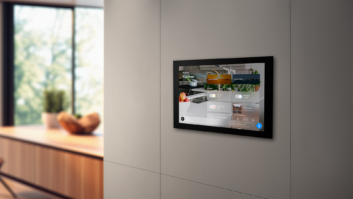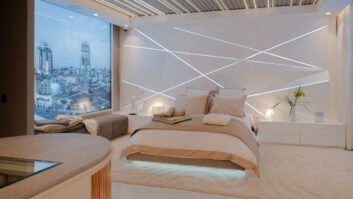Last week Mark Feinberg and I wrote about our respective automation partners — Control4 for Mark and Crestron for me — and why they are the right choice for our companies from a business perspective. This week, we want to continue the theme, but explaining how we position our automation partners and all the benefits each brings to the homeowner. While there are many more experiential and lifestyle reasons for a customer to automate their home, we have assumed you have already gotten your customer there and the next question is “Why use brand X?”
Related: Why We Love Our Automation Partners
One key thing we each agree on is to never bash another product or company. When a client asks me about another brand because their friend has it, I will let them know that Brand X is a great product and can do a lot of the things Crestron does. I will point out why I chose Crestron as my partner of choice, mainly focusing on one or two of the points from below, but will not say anything negative about Control4, Savant, URC, RTI, ELAN, or any of the other players in the space. It just makes all of us look bad if we are bashing each other. As an integrator, you will look much more professional if you espouse the positives of the product you sell versus harping on the negatives of other products.
With that said, the main selling points that I feel resonate with my customers when we talk about Crestron are the following:
- Customizability. I take great pride in customizing the GUI to a client. From something as simple as different colors and a princess font for their 5-year-old daughter, to new icons and custom button layouts on each page of the interface, clients get the exact look and feel they want.
- Flexibility. Whatever scenario the client can dream up, we can come up with a way to automate it. With the right programmer and good direction from the client and system designer, anything is possible.
- Scalability. Clients can start with a small, one-room system containing a basic processor and handheld remote. That same system can grow over time to include full home automation, and typically all of the hardware we started with can be repurposed throughout the project so nothing goes to waste.
- Interoperability. Crestron works with everyone. Again, with the right programmer, anything can be integrated. Crestron tends to be third-party product agnostic – they really do not care whose product you are using. They even support working with one of our favorite new products — Eero’s mesh networking hardware.
- End-User Flexibility. With the Crestron Pyng, clients have more power in their hands than they have ever had before. They can change lighting and shading scenes; add, remove, and rename devices; and really do most configuration the integrator usually has to do.
- Reliability. Crestron hardware does not break; they have lifetime warranties that give complete peace of mind.
- Security. Crestron products are built to enterprise standards. What does that mean? Well it means the same products going into your home are used in the world’s biggest corporations and, in some cases, the most important government buildings. You are getting the best in class when it comes to product and security.
Also by Todd Anthony Puma: 5 Ways to Improve Field Efficiency
As we did last week, I also spent significant time with Mark brainstorming and discussing his selling points for Control4 and how he positions it with clients.
- Scalability. A client can start with a small EA1 controller and remote control for $600 and can expand that to any size system over time, just by adding a more powerful controller (and repurposing the EA1 to another room) and whatever additional home automation subsystems they want.
- Compatibility. Control4 prides themselves on their driver database of over 12,000 supported third-party devices. Chances are if it is something widely available, it will work with Control4 in some way.
- Consistency. The Control4 user interface is the same no matter where you are. If a friend comes over and they have Control4 at home, they instantly know how to use the remote control, the touchscreens, and the keypads — it looks and acts exactly as it does at their home next door or across the country.
- Powerful programming and customization. While Control4 is comparatively straightforward to deploy and configure, the opportunity to dive deep and customize actions and automations is almost limitless. Automations can happen based on button presses, time of day, sunrise/sunset, weather events, occupancy, and many other events — all conditional on what else is happening in the home.
- End-User Configurability. With tools like Composer HE (a one-time software purchase) and When>>Then programming, Control4 home owners can customize almost anything in their home at their discretion and on their timeline. No more waiting for a programmer to be available to pay programming fees to change what happens when the front door is unlocked and the alarm is disarmed. Additionally, lighting scenes can be created, edited and deleted from any touchpanel or tablet (just not from phones).
- Peace of Mind. One question Mark gets a lot is, “What happens if you get hit by a bus?” He prefers to answer with, “If I win the lottery and close the business, there are a number of great Control4 dealers in the market and any one of them can have full access to all of the programming and become your go-to dealer just by you changing the dealer of record on your Control4 online customer account.”
What else resonates with your customers (and with you!) when discussing your automation system of choice?







